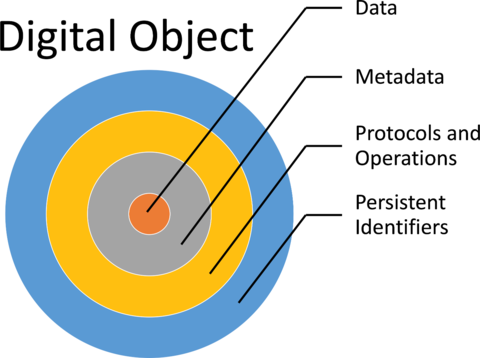Facilitating the Adoption of FAIR Digital Objects in Materials Science and Engineering
Summary
With the increasing use of data-driven methodologies, concerns around data discovery, data access, and data interoperability remain at the forefront. Communities have convened to work towards the convergence of three complementary visions: (1) FAIR Data Principles, (2) Linked Data and Semantic Web, (3) Digital Object Architecture. This convergence has established the FAIR Digital Object Framework. This project seeks to enable the materials community to leverage these developments.
Description

The FAIR Data Principles define a set of aspirational guidelines for those whose goal is to improve the reusability of their data. However, the FAIR Data Principles do not define an explicit set of requirements to achieve FAIRness, which may vary within and across domains. Various projects have emerged to support community consensus approaches and evaluate maturity. This project seeks to survey this landscape and support the materials science and engineering community. This project is centered around evaluating and leveraging FAIR Digital Objects (FDOs), which will unite three complementary visions:
- FAIR Data Principles
- Linked Data and Semantic Web
- Digital Object Architecture
This project is currently focused on developing standards and best practices through the following efforts:

